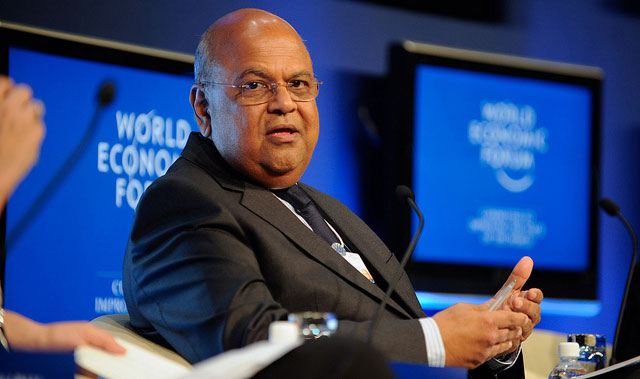
National treasury was praised for managing to attract interest in its new US$1,25bn 10-year bond issuance on the international capital market on Friday.
South Africa issued its first international bond in two years on Thursday to fund its budget deficit that has increased to about 4% of GDP in the last four years, treasury announced on Friday.
The US dollar bond was priced at a coupon (interest rate) of 4,875%, which represents a spread of 335 basis points above the 10-year US treasury’s benchmark bond, it said in a statement.
“That is down from about 350 basis points when it started marketing deal. At close of local trade, R203 was marked-to-market at 8,145% — down two basis points,” NKC African Economics said in a note on Friday.
“The global investor base was primarily located in Europe and the US,” national treasury said.
“The transaction was more than two times oversubscribed,” it said. “The South African government sees the success of the transaction as an expression of investor confidence in the country’s sound macroeconomic policy framework and prudent fiscal management.”
“In good times, the bond could have been four or five times oversubscribed,” said Umkhulu Consulting’s Adam Phillips. “However, to be over two times oversubscribed is a pretty good sign taking into consideration all the local political issues.
“We should take our hats off to finance minister Pravin Gordhan and treasury for getting that much interest into that.”
The rand improved quickly on the news, trading at R15,09/$ by 10.40am. “It has come down in the last half hour,” Phillips explained. “Since 9am it has been edging down on the news.
“Operators who are long the rand might play on it, but I think that the news will draw out importers as we nudge to R15,” he said. “Expect a quiet afternoon [in currency trading]. Given what we have experienced over the last couple of weeks politically, I think Pravin Gordhan will be relieved.”
Phillips said South African bond yields have edged up all week, so the yield players have been on the fence there. “But you have to watch the yen and the euro,” he said.
This issuance forms part of South Africa’s 2016/2017 financing programme.
Government’s borrowing requirement over the medium term amounts to $5,5bn equivalent, which includes $1bn carried over from 2015/2016.
The proceeds of the bond will partially finance the government’s foreign currency commitments of $6,4bn over the medium term, it said.
“During the remainder of 2015/2016, government plans to raise the equivalent of $1bn in global capital markets,” treasury said in its budget review in February.
“Over the medium term, government intends to borrow the equivalent of about $4,5bn to cover its total foreign currency commitments of $6,4bn in global markets. The rest will be financed through foreign exchange purchases,” it added.
Treasury said in the review that government’s foreign debt as a percentage of gross loan debt remains low, averaging 10% over the medium term.
“The current account deficit has swollen back to above 5% of GDP most recently, driving concern about how well South Africa will be able to stand up to sudden swings in capital flows that could be triggered by accelerated US monetary policy tightening,” NKC said.
“The rand has rebounded somewhat since hitting all-time lows in thin liquidity during mid-January, aided by hawkish action from the South African Reserve Bank and generally calmer emerging markets. However, further gains will be difficult given the heightened political risks environment,” it said.




